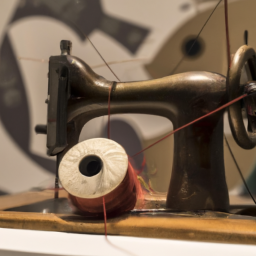
History of Darning Stitch
The art of darning stitches, commonly known as darning, is a traditional method of mending fabric using needle and thread. By skillfully weaving the threads back and forth, this technique repairs holes and strengthens the worn areas of clothing, making the garment usable again.
Darning is believed to have originated thousands of years ago, primarily as a necessity in regions where clothing was made of expensive materials or difficult to obtain. As the term “darn” itself is derived from the French word “darner,” meaning “to mend,” it indicates a long history of the technique.

In ancient times, darning was carried out using various materials such as animal tendons, plant fibers, and even precious metals like gold and silver threads. Skilled craftsmen and women used thick needles made of bone, ivory, or metal to meticulously repair clothes.
During the Renaissance period, darning became particularly popular. Elaborate embroidery and intricate darning stitches were used not only for mending but also to embellish and beautify garments. The technique became a sought-after skill among the aristocracy, and embroidered darning was seen as a sign of wealth and opulence.
With the advent of the Industrial Revolution and the subsequent mass production of clothing, darning gradually lost its prominence. As clothes became cheaper and more disposable, the need for repair techniques decreased. However, darning remains an essential skill, cherished by those who value sustainable fashion, the art of craftsmanship, and the ability to prolong the life of their clothing.
In recent years, darning has experienced a revival, driven by a growing interest in eco-friendly practices, slow fashion movements, and the desire to minimize waste. Many individuals have embraced darning as a creative form of expression, experimenting with different colors, patterns, and techniques to turn visible repairs into unique features on their garments.
Today, darning is not limited to mending garments alone. It has expanded to include other textiles such as blankets, tapestries, and even upholstery. Artists and designers incorporate darning stitches into their work, blurring the line between traditional mending and contemporary art.
The history of darning stitch is a testament to human ingenuity, adaptability, and the desire to preserve and extend the life of our belongings. Whether as a practical skill or a means of self-expression, darning continues to thrive, playing an essential role in sustainable fashion and reminding us of the value of craftsmanship in our throwaway society.
Disclaimer: The images used in this article are for illustrative purposes only.




